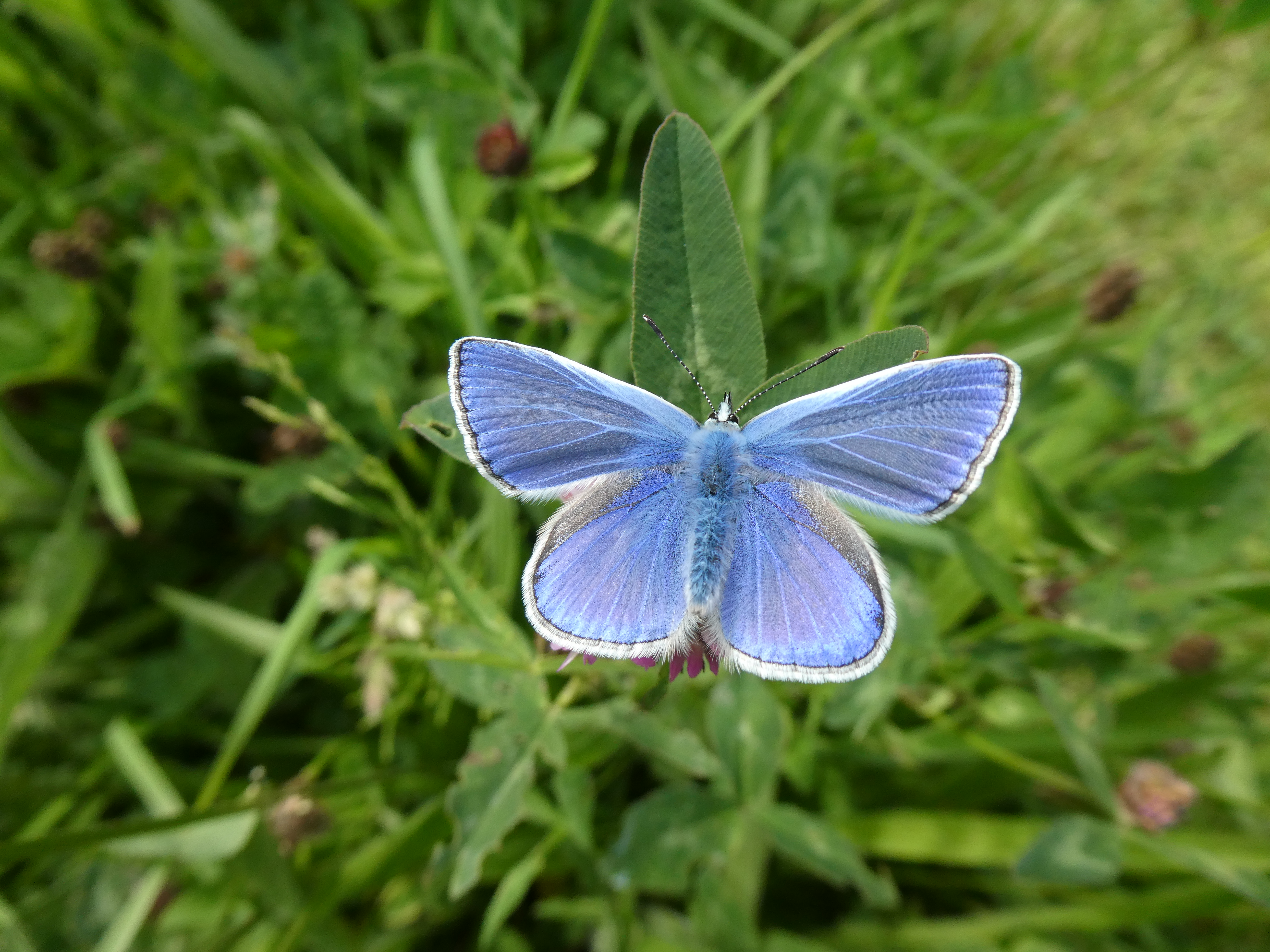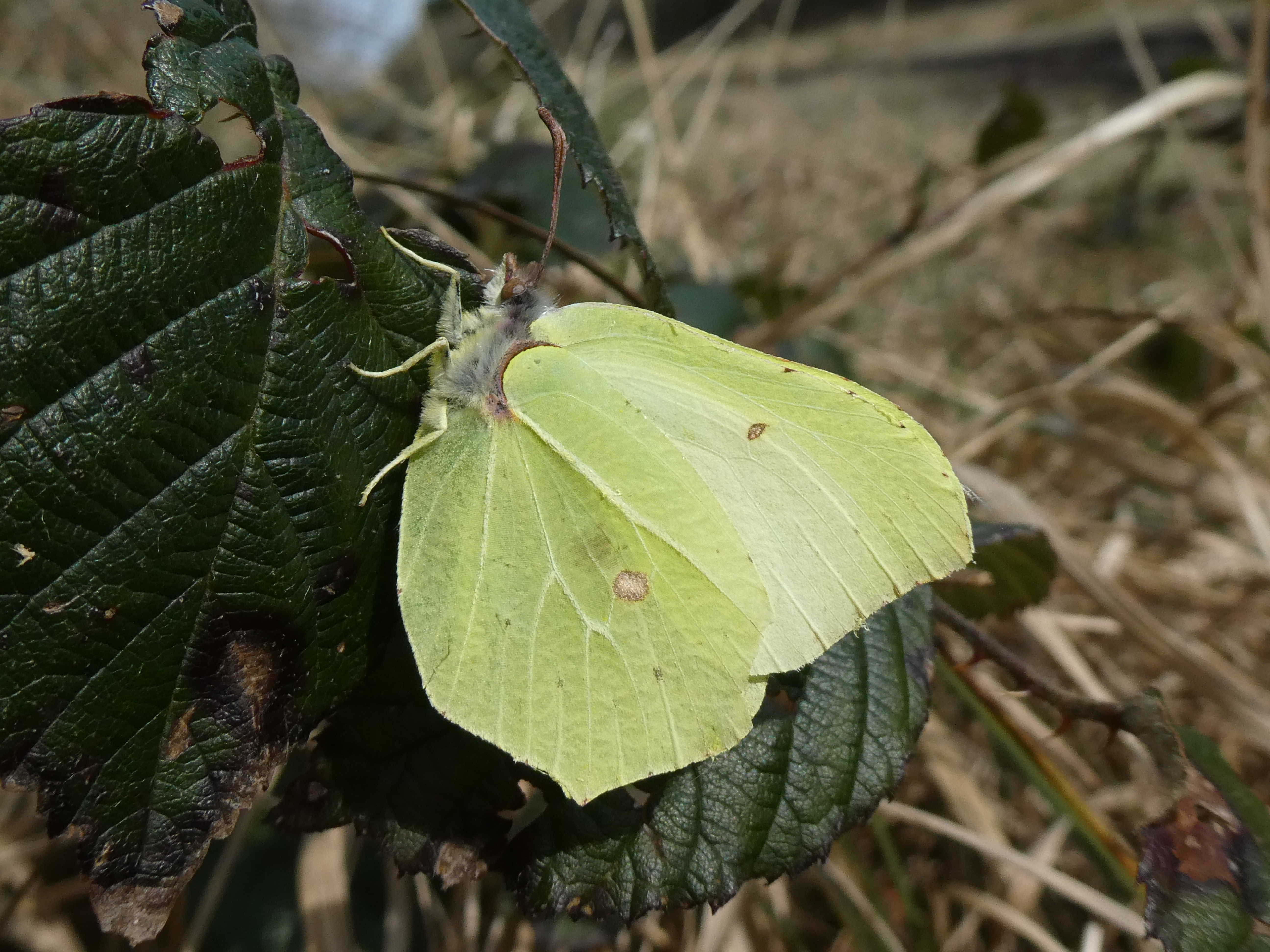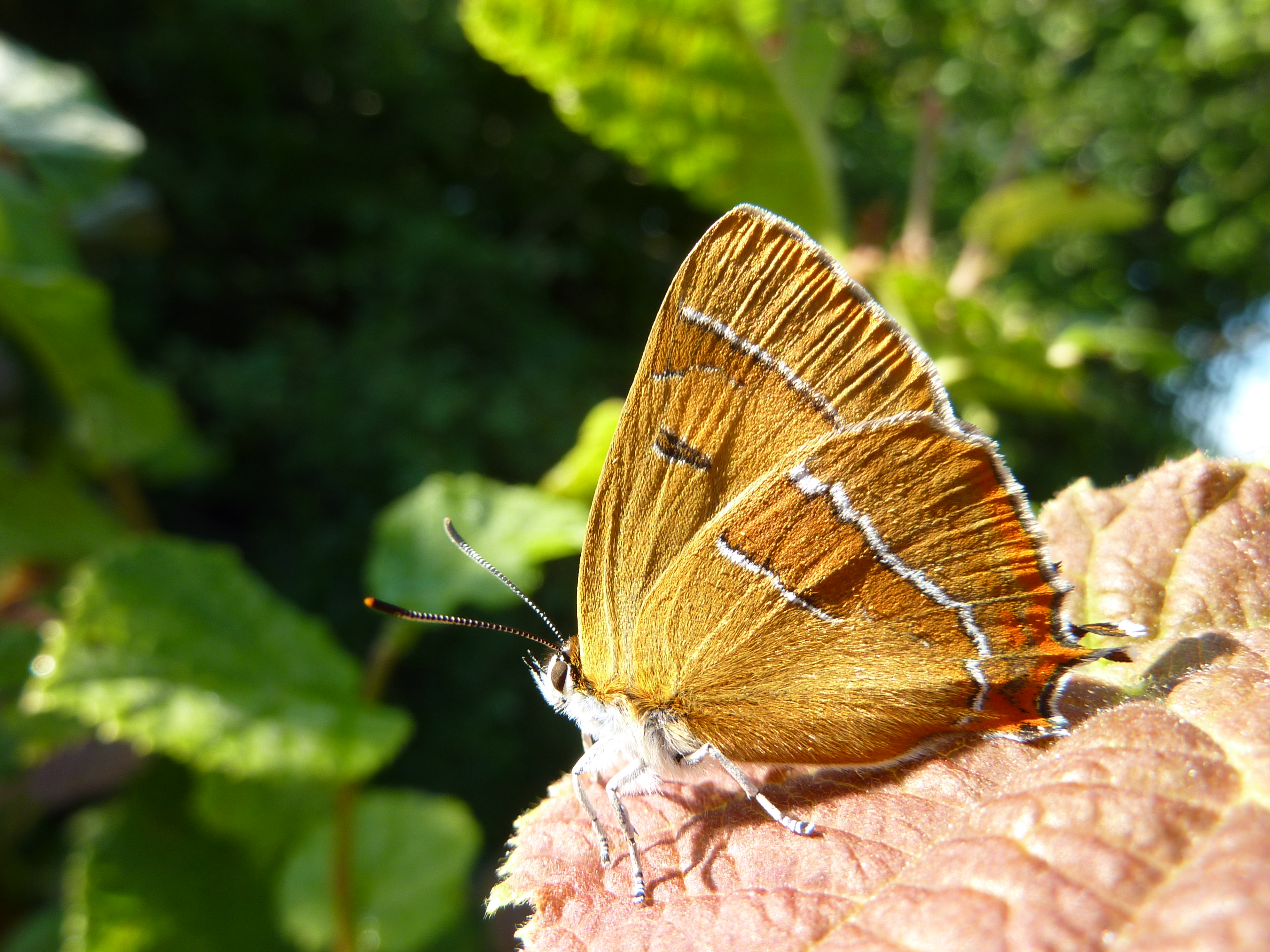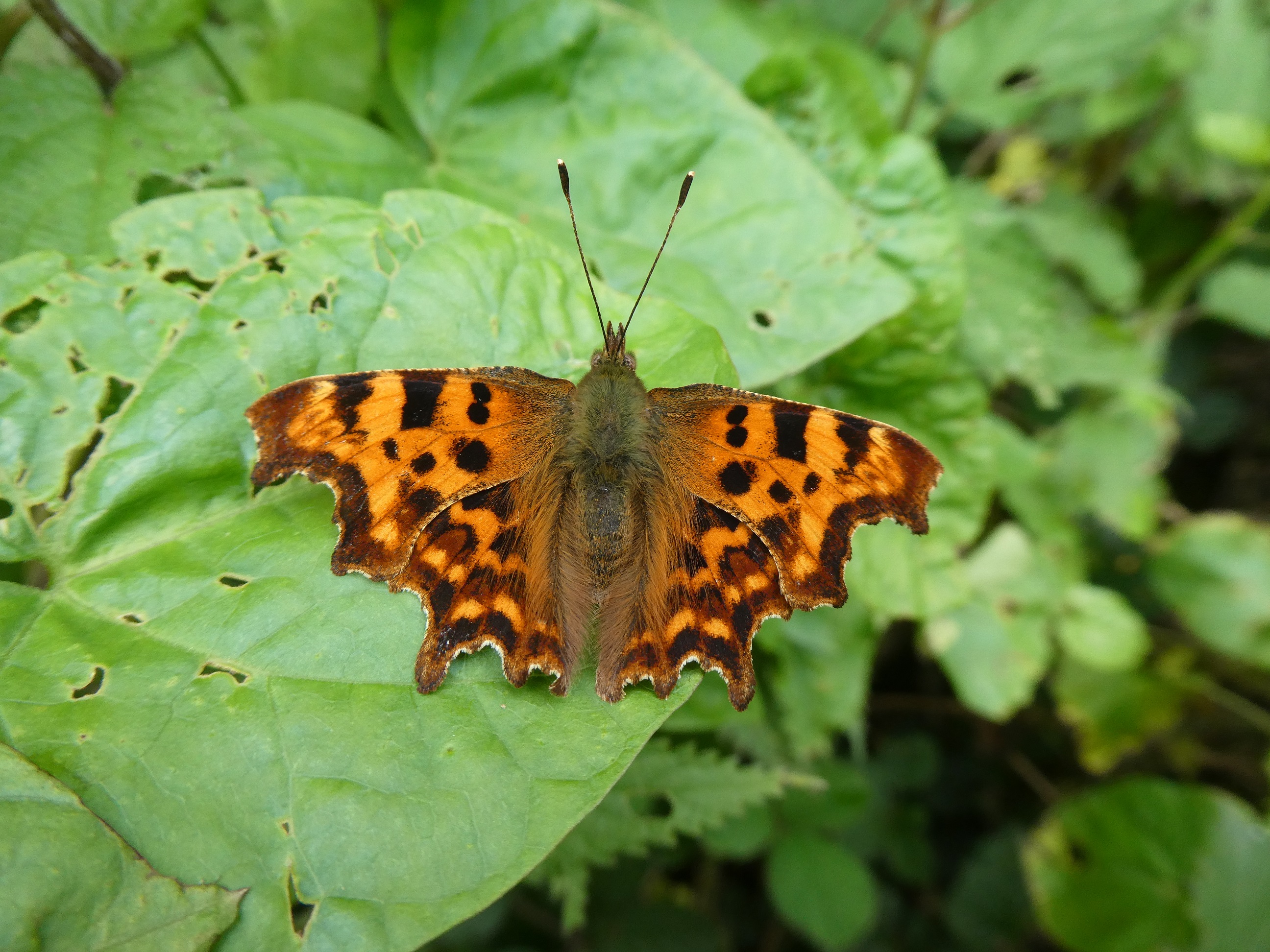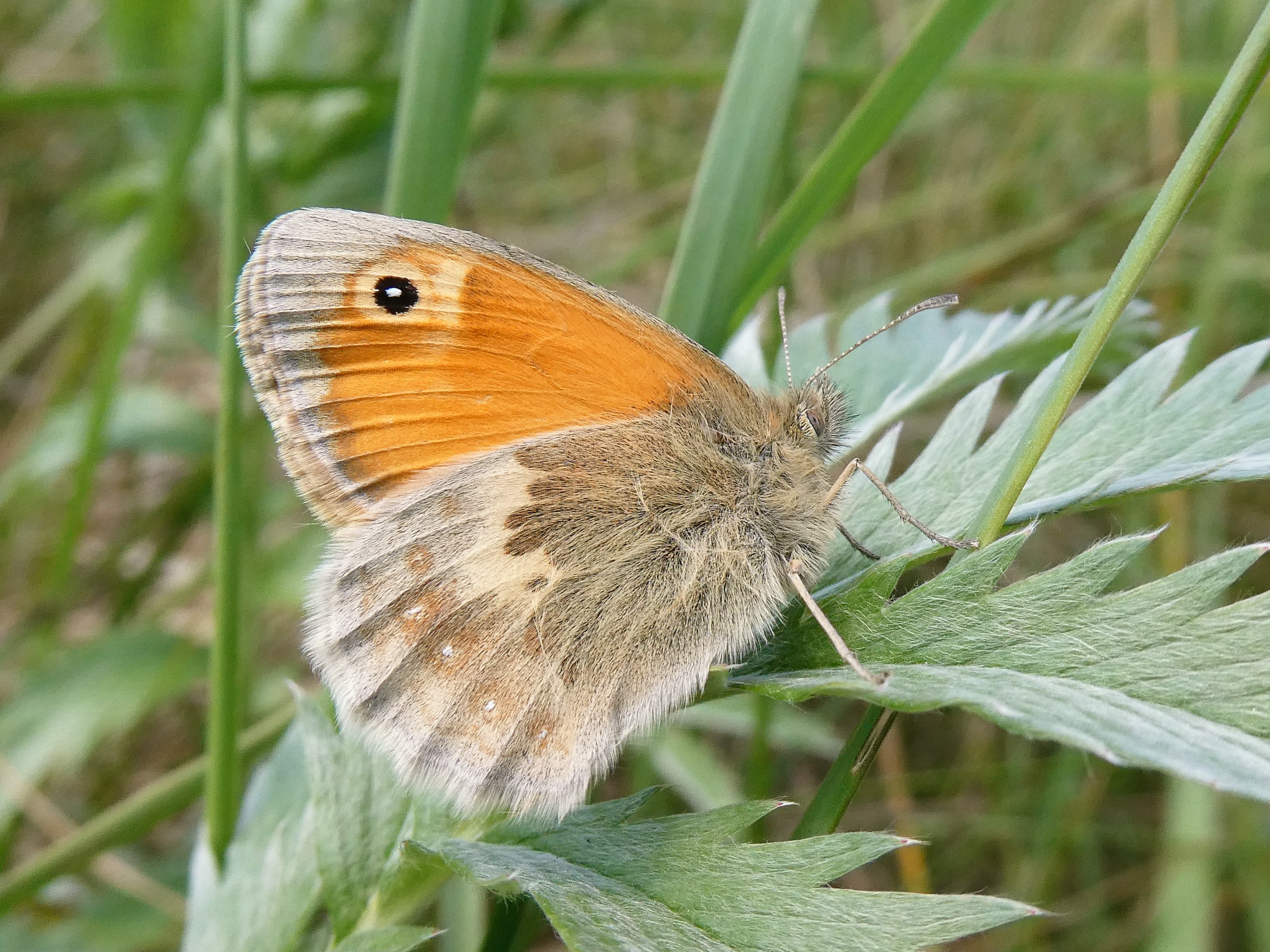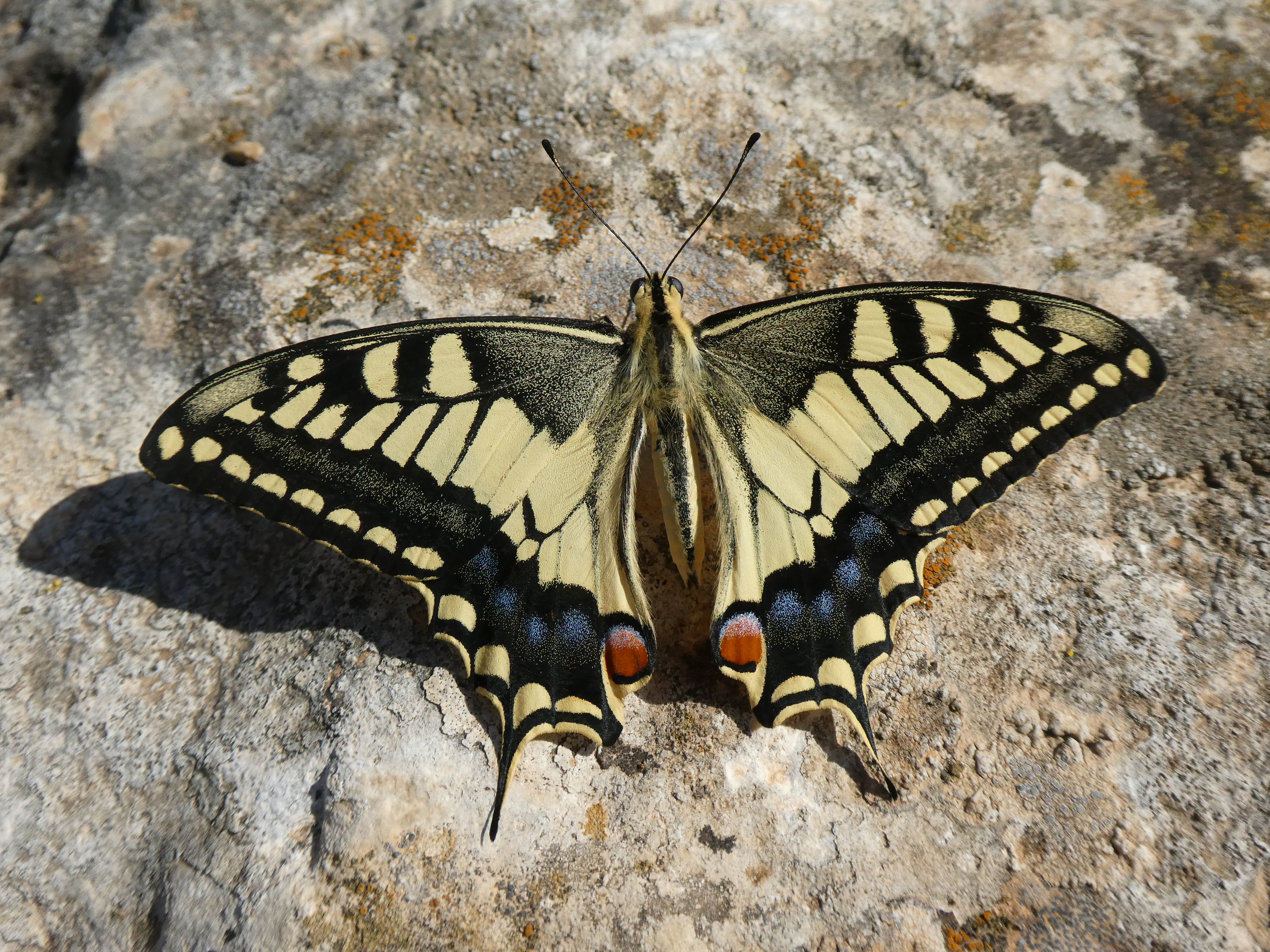Ireland’s butterfly species operate in a relatively cool climate which presents challenges to these ectotherms, cold-blooded animals whose regulation of body temperature depends on external sources, such as a cool, shaded woodland or direct sunlight or a heated surface such as a mat of dead vegetation, branch or rock. The metabolic activity and physical movement of butterflies are highly influenced by the thermal environment. This article looks at strategies butterflies use to deal with their thermal environment.
The adult butterfly needs to fly to escape enemies, to find food, mates and breeding sites. Efficient flight is only possible when the thoracic musculature, which houses the wing muscles, reaches temperatures in the range of 35-40 Celsius. Biological functions, such as mating, egg development and egg-laying, require certain temperatures (these vary according to the species). Air temperatures in Ireland rarely reach the levels needed so how do our butterflies reach the temperatures required for efficient flight and for the metabolic activities needed to sustain life?
During our butterfly flight periods, all our butterflies deal with thermal challenges. These can be unsuitably hot or unsuitably cool conditions. A way to raise body temperature to enable the butterfly to take flight is wing muscle vibration. This is used by a butterfly during cool weather or when it has roosted in a cool location when it is unable to use external heat sources to warm its flight muscles. Wing muscle vibration, which looks like the butterfly is shivering, allows a butterfly to create enough heat to fly to or from cover but will not allow for sustained flight. The butterfly (or moth) vibrates its wings vigorously until it has created heat by friction that enables it to fly, usually weakly and briefly, to reach a suitable location. In cool, breezy weather this strategy may not work, leaving the immobile butterfly vulnerable to predation and severe weather. Occasionally, early on spring and autumn mornings, stranded butterflies can be found resting in the open on a flower from the day before, covered in dew.
Butterflies are efficient heat seekers, frequenting warm sheltered areas receiving direct sunlight even when these sites contain fewer resources than more open sites. It will be noted that open flower-rich grassland will often have fewer butterflies than expected, while sheltered rides in woodland with fewer nectar resources can hold an abundance of butterflies and other insects. Managers of nature reserves containing open, exposed grassland should be careful to allow some scrub, a resource that enables grassland butterflies to find shelter when the weather is cool, cloudy and windy. When the sun shines, butterflies will move into more open areas. As our climate warms, scrub habitats may become vital for butterflies to escape escalating heat during the hottest times of the day or season.
Butterflies also adopt thermoregulation strategies (regulation of body temperature) that vary according to species, habitat and temperature. The wings are used to regulate temperature, both to raise and reduce the temperature. Most of our butterflies will bask with wings held wide open when they need to increase body temperature. This is known as dorsal basking. When the thorax is coolest, the wings are held fully extended and the extreme edges of the wings are pressed against the surface, often bare soil or rock. This is known as the ‘appression’ posture, proposed in one study as potentially different from dorsal basking. This is often seen used by the Small Tortoiseshell, Peacock, Comma, Red Admiral and Painted Lady-the first three species use this technique frequently on cool, sunny days in early spring. This technique is believed to be the most efficient for increasing thoracic temperature, by trapping warm air radiating from the surface, trapping warm air radiating from the underside of the wings and minimising the flow of cooling air around and under the thorax.
Basking with wings held off the surface in a horizontal posture is used to warm the butterfly when it is cool but slightly warmer than a butterfly applying appression. The butterfly is absorbing heat onto the wings, but experiments with dead butterflies show that only 30% of the wing area closest to the body is used to transfer heat to the thorax. A heating thorax causes the basking butterfly to angle its wings, forming a shallower ‘V’ as the thoracic temperature rises until the butterfly folds its wings, a posture to allow cooler air to circulate around the thorax so the insect can cool down. If it becomes too warm for this thermoregulation strategy to be efficient, the butterfly seeks shade.
Lateral basking is another thermoregulatory mechanism used by some of our butterflies. This involves basking with folded wings where the butterfly perches on a surface and angles its wing surfaces by leaning sideways onto the sun to receive the maximum solar incidence when the insect is too cool. When the butterfly is warming, it starts to correct its posture until perched upright. When the butterfly is too warm it stands head-on to the sun, raising its body off the surface by standing tall. This strategy is used particularly and rather strikingly by the Graying, and less notably by the Large Heath, Small Heath, Green and Purple Hairstreaks and the Brimstone. The Brimstone uses this especially in spring, typically by basking on dry, dead grass clumps. Using this mechanism, it can raise its body temperature to the high 30s Celsius when air temperatures are barely above 13 Celsius.
The other form of thermoregulation used is called reflectance basking. This is used by some of the whites, especially the Large White, Small White, Green-veined White and Orange-tip, although these species will occasionally use dorsal basking when they need to recover a steep loss of body heat. The butterfly perches on a surface, usually a leaf, with wings half-open. It orients its position to receive sunlight onto its wing surfaces. The white wings reflect solar radiation onto the body to increase body temperature. A dusting of dark scales on the wings near the thorax may also play a role in heating the thoracic muscles. When it is too warm, the butterfly shields body tissues from the sun by folding its wings.
A thermoregulation mechanism used by the Brown Hairstreak to avoid over-heating on its sunny, sheltered hedge habitat is orienting its closed wings towards the sun, where its shiny undersides reflect rather than absorb the light. While this appears to be lateral basking, which is used to increase body temperature, this rare butterfly mainly uses dorsal basking to warm itself. Appearances can deceive!
Let us look at how adult butterflies respond to prolonged unsuitable thermal conditions. Migration involves butterflies leaving an area that is becoming unsuitable and moving to a location where their needs are met. It enables butterflies to escape the onset of prolonged unsuitable conditions typically caused by changing temperatures. An example of this strategy is the migratory habits of the Painted Lady, which extends its range progressively from early spring onwards through summer, from North Africa, throughout Europe. This continues until the onset of cold weather when return southwards migration of the species is undertaken by the children, grandchildren and great-grandchildren of the individuals that dispersed northwards earlier in the year.
Another response by adult butterflies to prolonged unsuitable thermal conditions (in Ireland these prolonged conditions consist of low temperatures) is hibernation. This is used by the Brimstone, Small Tortoiseshell, Comma and Peacock butterflies and by several moths, such as the Red-green Carpet, The Herald and Tissue. These species remain dormant until suitable temperatures return.
The next time you are outside looking at butterflies, look at the posture it is adopting. There is nothing casual, accidental or whimsical about the way butterflies perch, they are always doing what they do for a reason. There is a lesson for us in that, but you can decide what that is!

